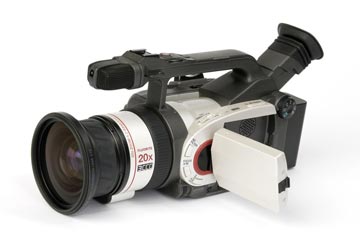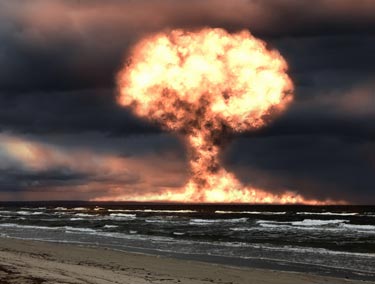 Technology has changed drastically over the last few years bringing more relevance to digitization and document scanning solutions that ease this complex process. Almost all industries are now in the process of digitization and the film industry is no different. Movie films are fragile and can be easily damaged. Storing these film reels for a long period of time can lead to decaying of films. To protect these films for generations to come, digitization is the way to go. They help in enhancing the picture quality with color correction and bring these films back to life. When you have large volume scanning to do, to ensure accuracy and timeliness, the service of a document scanning company can be obtained. Service providers in this area offer bulk document scanning service to libraries, archives, media organizations and other entities that don’t have an in-house digitization department.
Technology has changed drastically over the last few years bringing more relevance to digitization and document scanning solutions that ease this complex process. Almost all industries are now in the process of digitization and the film industry is no different. Movie films are fragile and can be easily damaged. Storing these film reels for a long period of time can lead to decaying of films. To protect these films for generations to come, digitization is the way to go. They help in enhancing the picture quality with color correction and bring these films back to life. When you have large volume scanning to do, to ensure accuracy and timeliness, the service of a document scanning company can be obtained. Service providers in this area offer bulk document scanning service to libraries, archives, media organizations and other entities that don’t have an in-house digitization department.
Scanning film negatives is a practical solution when it comes to preserving them from damage. Film scanners are available that can do the scanning efficiently ensuring high quality output. Over the last two decades, most film shooters have come to incorporate scanning into their practice in some form or other whether it is to scan films/prints or to share online, or make digital prints. A scanner may be a good investment for those who shoot and need to scan large amounts of film. However, for those who don’t have that kind of requirement, and for those who use medium and large format films, it may not be a very wise investment.
An alternative to a scanner is a digital camera that is a good tool for digitizing your fim. A scanner performs like a regular camera, and a camera can be used to perform the functions of a scanner. Cameras can help you re-photograph or duplicate your film for digital use. Now you have good quality high resolution cameras that can produce high resolution digital files of your films.
Digitization of Cold War Era Nuclear Test Films
As an example of film digitization, let us consider the significance of digitizing Cold War era nuclear test films.
There are thousands of such films and these document the 210 atmospheric nuclear tests the United States conducted between the years 1945 and 1962. Examples of such films include “Operation Teapot,” “Operation Dominic” and “Operation Hardtack.” Many of these films were commissioned by the government and were kept at the Los Alamos National Laboratory. Now, a team of physicists and film archivists at Lawrence Livermore National Laboratory in California are digitizing the films before it is too late.
 A weapon physicist Greg Spriggs found that the film canisters started to smell of vinegar, which is an indication of decomposition. Spriggs started digitizing the films using advanced special scanners and as they digitized they found that the nuclear yield data based on the images were wrong. The films are not just old government movies, they are scientific documents that are useful for understanding nuclear power. Today the scientists do not get access to these kinds of nuclear tests since atmospheric nuclear tests were banned in 1963. At present nuclear physicists run virtual nuclear tests on supercomputers.
A weapon physicist Greg Spriggs found that the film canisters started to smell of vinegar, which is an indication of decomposition. Spriggs started digitizing the films using advanced special scanners and as they digitized they found that the nuclear yield data based on the images were wrong. The films are not just old government movies, they are scientific documents that are useful for understanding nuclear power. Today the scientists do not get access to these kinds of nuclear tests since atmospheric nuclear tests were banned in 1963. At present nuclear physicists run virtual nuclear tests on supercomputers.
Spriggs and his team re-analyzed the old films using new techniques. The old method involved analysis of the film frame by frame. But this method is prone to errors. The newly digitized film helps researchers to have clearer and more accurate yield estimates. Spriggs said that they discovered new things about the detonations and new correlations are now being used by the nuclear forensic community. The lab has posted various films on YouTube.
The team has located around 65% of the films from various top-secret bunkers where they were stored. More than two-thirds of these have been scanned. Around 500 films have been analyzed so far with modern techniques to provide more accurate readings of the explosions.
Spriggs hopes that the films would deter people and countries from using such weapons in the future. They give us a clear and shocking idea of the tremendous amount of energy released by nuclear tests. If the history of these tests are captured and the extent of devastation these could bring about revealed, people would be reluctant to use them.
Scanning the Best Way to Save Old Film Negatives
Film negatives tend to deteriorate over time even if they are kept protected in some way. These are made up of chemicals and chemical dyes that are sensitive to light, moisture and temperature variations. These gradually degrade resulting in the image starting to fade away, turning yellow and developing cracks. Dust, dirt, oil and certain gases could also contribute to the deterioration process. If you have films or documents that need to be digitized, then approach a reliable provider of document scanning services that uses advanced technology. They have leading professional grade equipment, technology and expert staff to produce crystal clear images.



